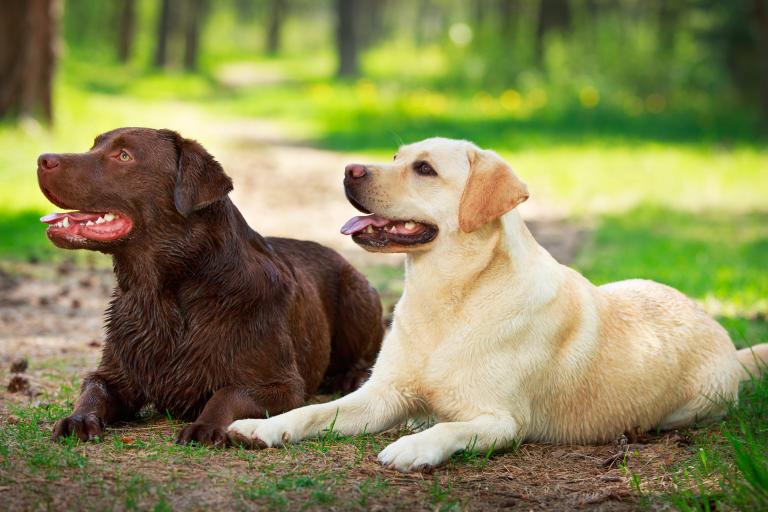Oculoskeletal Dysplasia 1 (OSD1 Dog)
Oculoskeletal dysplasia 1 (OSD1) is caused by a lack or deficiency of collagen in the cartilage and ocular collagen, resulting in malformations (dysplasia) of both the skeleton and the eyes. Affected dogs show dwarfism due to short legs, especially the front legs. Retinal detachments and cataracts in the eye occur, resulting in blindness.
The disease occurs in the Labrador Retriever. It is inherited in an autosomal recessive manner.
Synonym: Retinal dysplasia (RD)
Genetic Test: available in Shop
Symptoms
- Visual disorders
- Blindness
- Skeletal malformations
- Dwarfism
- shortened front legs
General Information
- In Oculoskeletal Dysplasia 1 (OSD1), there is an absence or deficiency of collagen in the cartilage and in the ocular collagen.
- Malformations (dysplasia) of both the skeleton and the eyes.
- The first symptoms can already be seen at the age of 4 to 6 weeks.
- Some carriers (heterozygous), but not all, have eye problems such as focal retinal folds or plaques with retinal dysplasia.
Test Information
This mutation test detects an insertion (c.10_11insG) in the COL9A3 gene.
Test in Shop
The test is carried out in a partner laboratory.
Genotype and Lab Report
Inheritance: autosomal recessive
→ The disease only occurs when both alleles of the gene are affected by the mutation (osd1/osd1). Dogs that have an allele with the causative mutation (N/osd1) usually show mild signs of the disease and are carriers.
Genotypes:
N/N = genetically normal
The dog has no variants for OSD1 and thus cannot pass it on to offspring.
N/osd1 = a carrier
The dog is a carrier, with mild manifestations of the disease. . The variation is passed on 50% to the offspring, which are also carriers.
osd1/osd1 = affected
The variation would be passed on to 100% to the offspring, but often animals do not reach maturity age.
Recommendations
- The breeding of two carrier animals (N/osd1 x N/osd1) should be avoided because there is a 25% probability that the offspring will be affected.
- Affected animals (osd1/osd1) and heterozygotes of slightly affected carriers (N/osd1) should be excluded from breeding.
Literature
Goldstein, O., Guyon, R., Kukekova, A., Kuznetsova, TN., Pearce-Kelling, SE., Johnson, J., Aguirre, GD., Acland, GM.: COL9A2 and COL9A3 mutations in canine autosomal recessive oculoskeletal dysplasia. Mamm Genome 21:398-408, 2010. Pubmed reference: 20686772. DOI: 10.1007/s00335-010-9276-4.
Further information is available at: Online Mendelian Inheritance in Animals.

